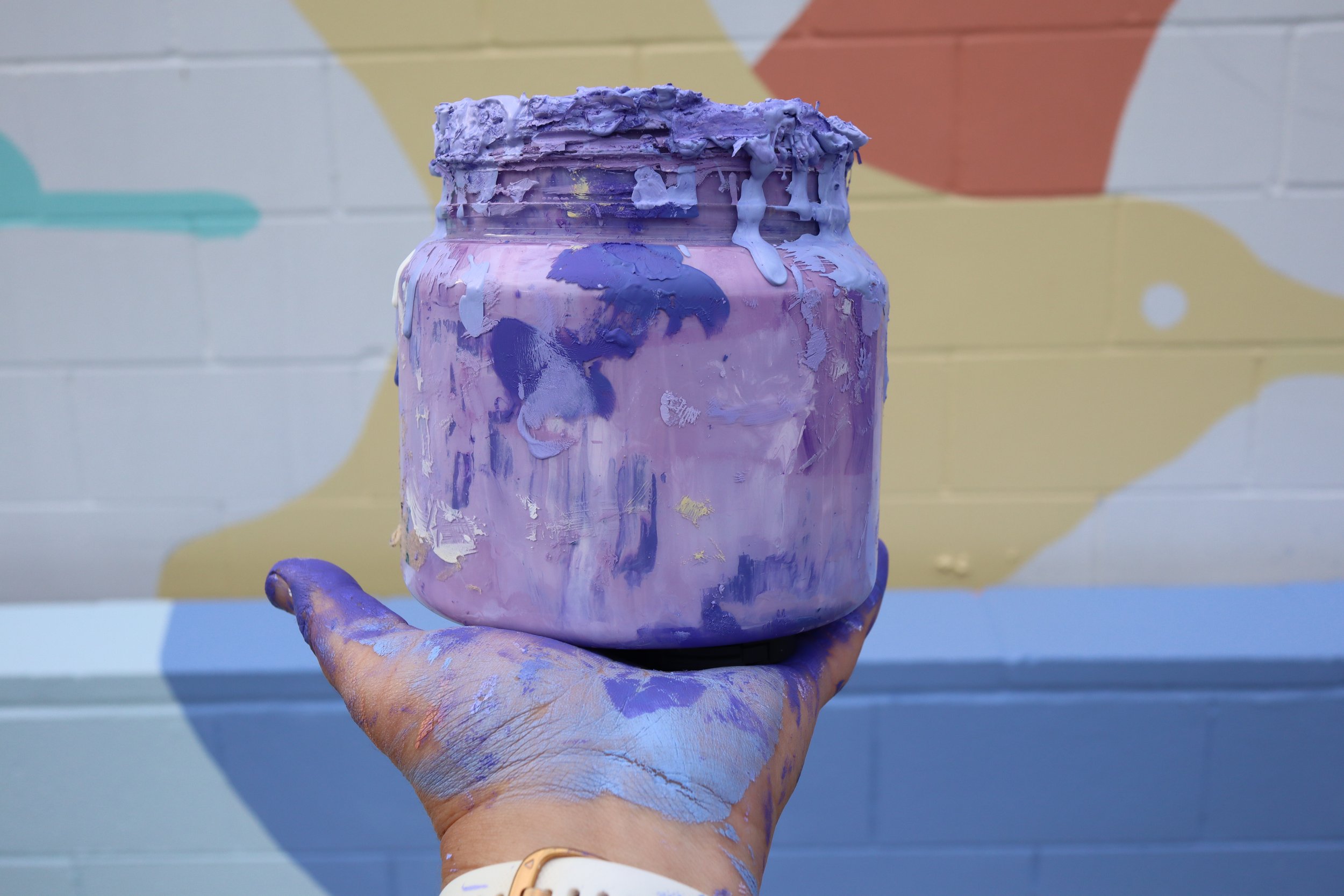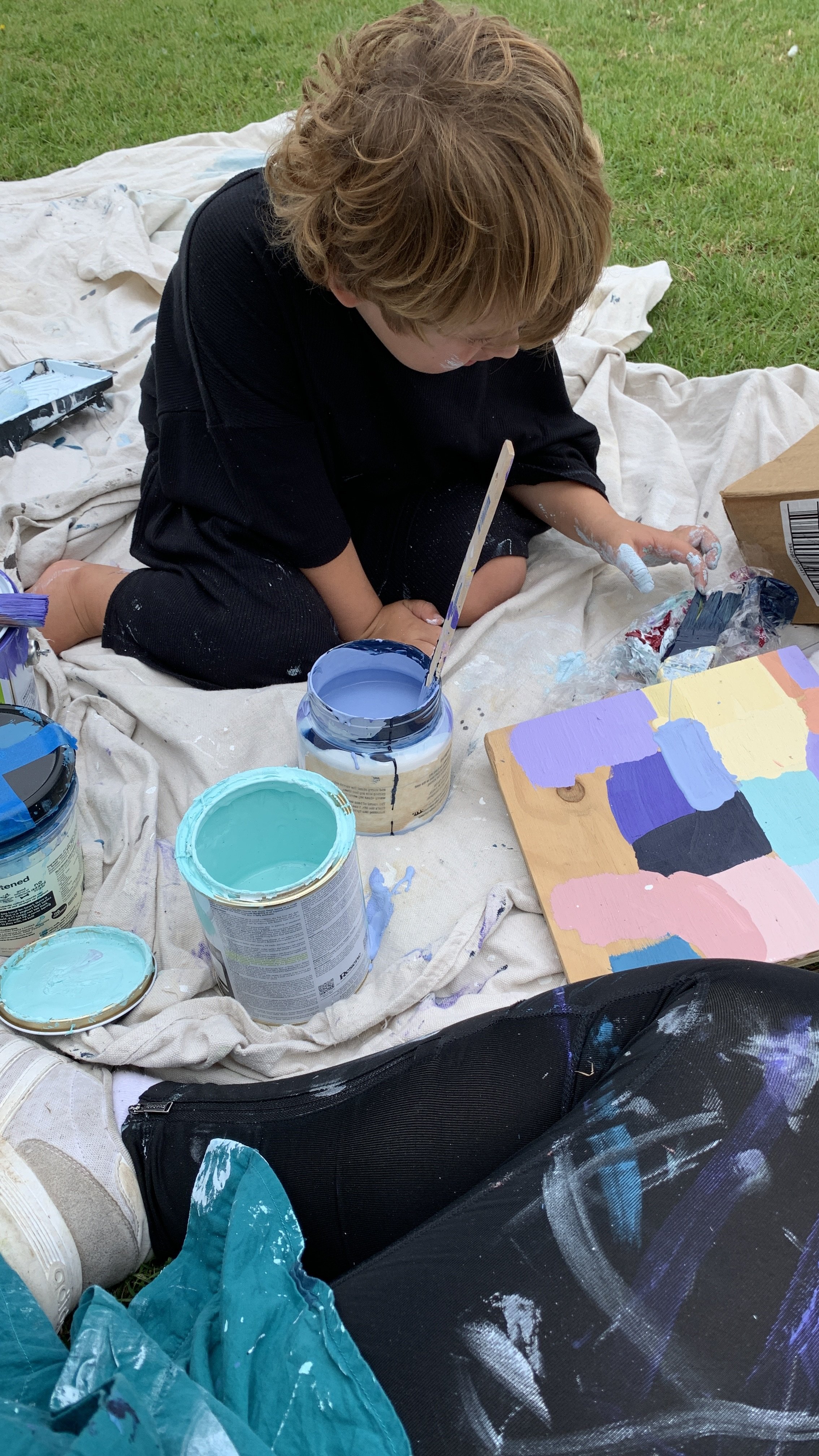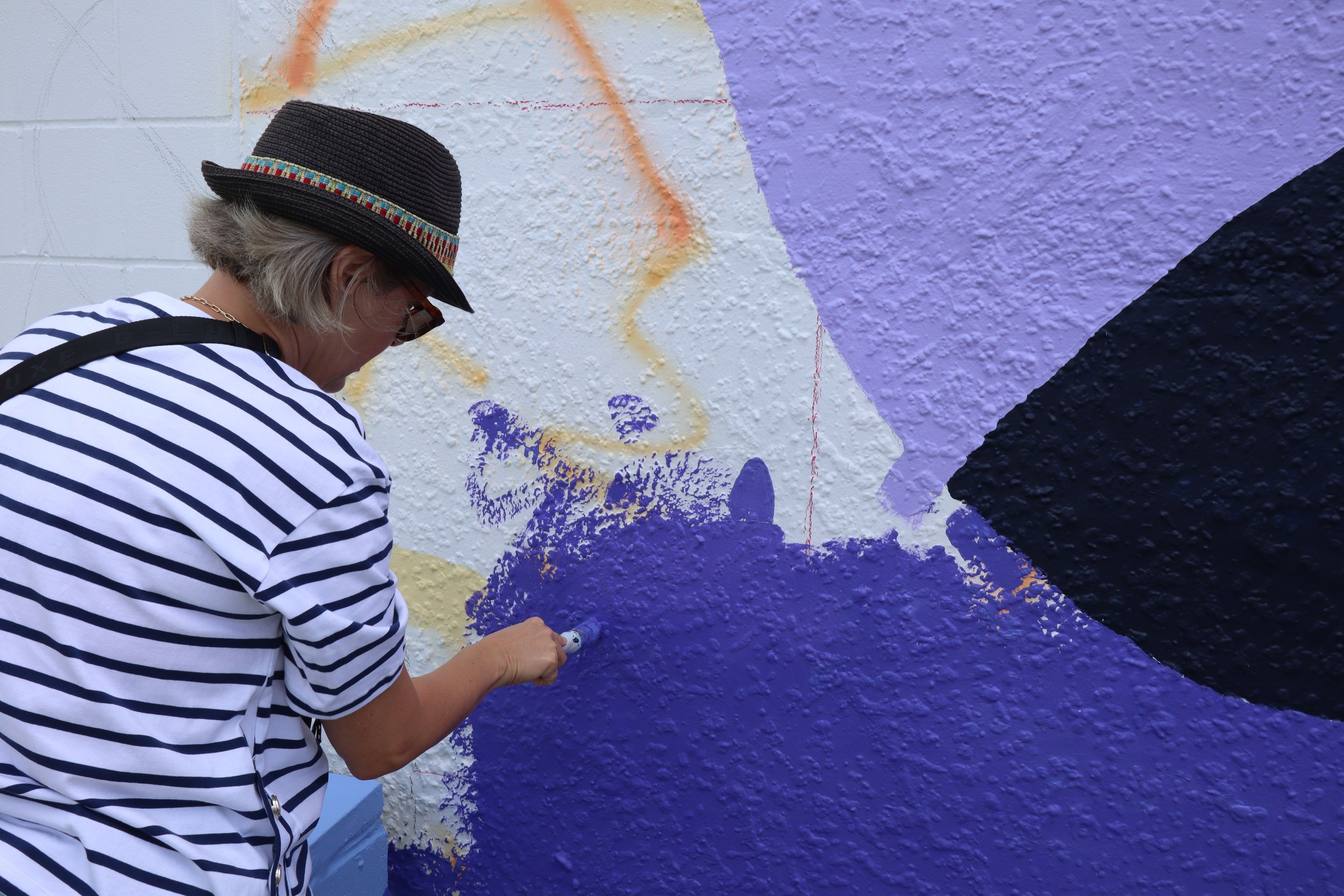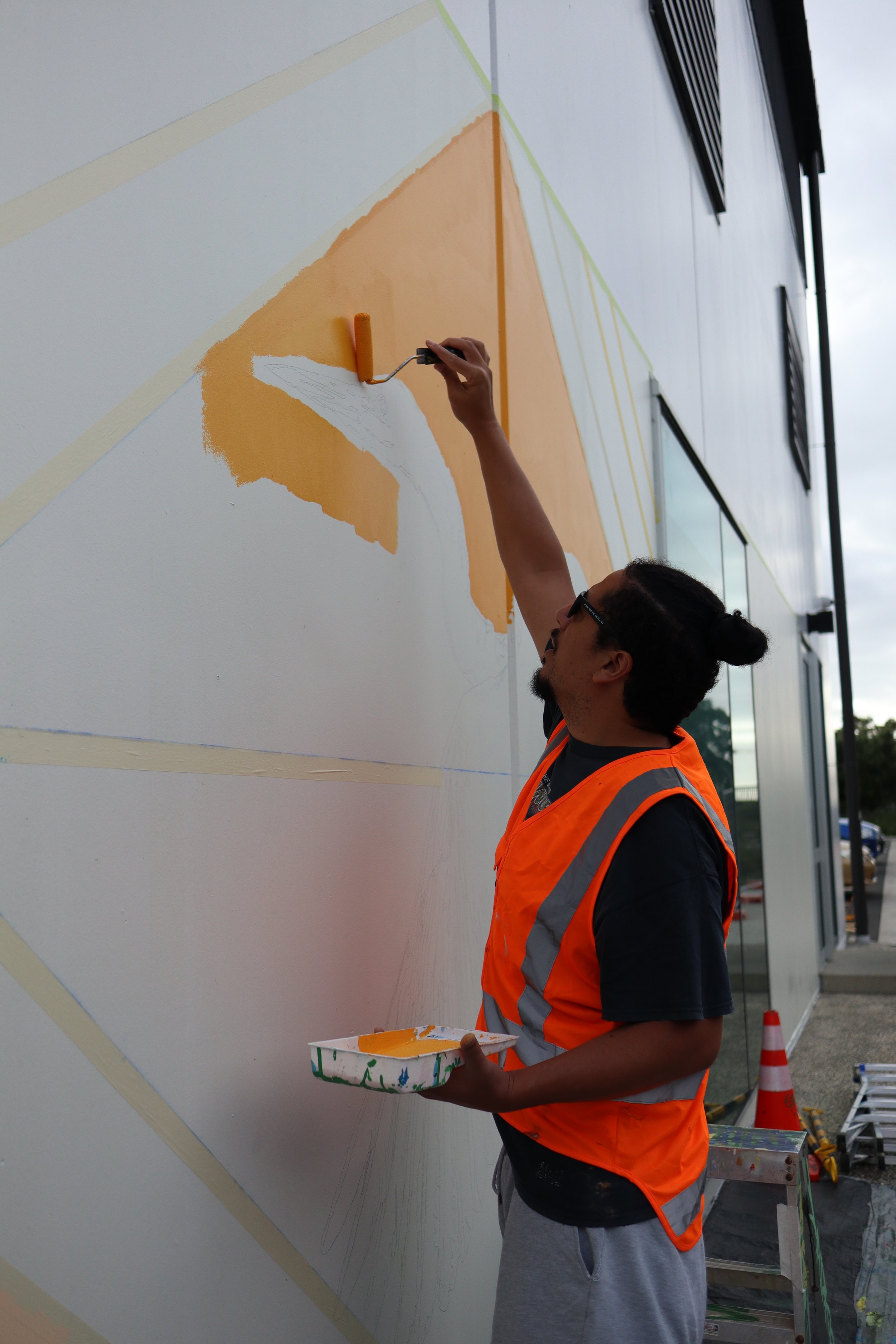
TE ATATŪ WALLS
4 - 10 March 2024
Te Atatū Walls is a public art project organised by two local artists Kate Hursthouse and Rebecca ter Borg that takes existing blank walls in the community and turns them into public works of art. The first Te Atatū Walls event took place in March 2024 with three new murals created in the community by four local artists.
The Artists & The Walls

Kate Hursthouse
WALL THREE // 538 TE ATATŪ ROAD
This mural depicts the migration of the kuaka (godwit) who have a special connection to Te Atatū Peninsula. Every spring thousands of kuaka land on the shell banks at the tip of the peninsula having flow all the way from the arctic circle in Alaska. The kuaka hold the record for the longest migratory flight, flying over 12,000km to feast on the cockles our unique coastal environment provides. For Māori the kuaka was a bird of mystery because no one could find their nest or their eggs. I have included the Māori whakatauki (proverb) “Kia kite te kōhanga kuaka” (Who has seen the nest of the kuaka?). This is because around about now (March/April) the kuaka lift off in the thousands and migrate all the way back to Alaska to nest.

Rebecca Ter Borg
WALL TWO // 571 TE ATATŪ ROAD
This mural reflects the unique and precious (and precarious) environment that surrounds us on Te Atatū Peninsula. The artist has chosen to highlight some of the smaller, lesser noticed taonga of the wetland and to try and create a future-hopeful feel of natural abundance. The main focus is the tuangi (or cockle) which is a vital taonga species to the health of the shellbanks of Motu Manawa and the sustenance of endangered manu that inhabit and visit the surrounding tahuna.

Mandy Patmore and Jermaine Reihana
WALL ONE // 595 TE ATATŪ ROAD
The inspiration for this mural was remembering a time when the Te Atatū catchment was a thriving wetland populated by a diverse range of native fauna such as the rare kōtuku (White Heron). The kōtuku is placed on the backdrop of a stylised Pātikitiki tukutuku pattern (Customary diamond shape lattice work) as the catchment was also a pātaka kai, abundant with kaimoana like pipi, tuangi and pātiki. The unfurling and unfolding bulbs and flowers of the Whau tree (Entelea arborescens) exemplifies the journey of the Māori creation narrative. From Te Kore, the realm of potential and energy, through Te Pō, the darkness, and born into Te Ao Mārama- the world of light. Unfolding and evolving, growing and unfurling like the bulbs of the whau tree flower, towards the light.










































